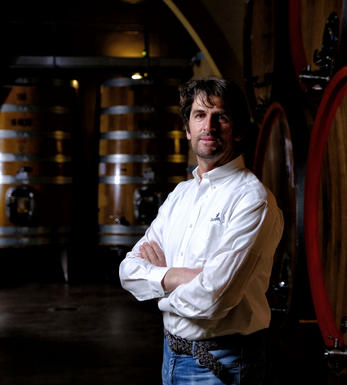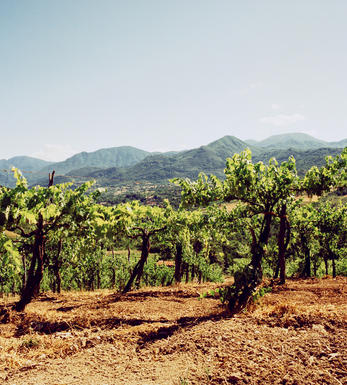
2004 Brunello di Montalcino, Gemini, Riserva, La Serena, Tuscany, Italy

Critics reviews
(Tamlyn Currin - jancisrobinson.com - 25 Mar 2010)
About this WINE

La Serena, Tuscany
Local lad Andrea Mantengoli has been farming Cantina La Serena since 1988. The farm is next door to Cerbaiona and Biondi Santi, on the eastern shoulder of Montalcino. The vines here are grown at 200-400 metres’ altitude. This covers a range of different soil strata: atypically white and yellow tufo; sand; schist; and galestro. Each gives depth and detail to the wine.
Andrea and his twin brother, Marcello, manage the estate. They are proudly organic, and they use some biodynamic methods. In addition to grapes and vines, the ecosystem here includes spelt, grain, olives and honeybees.

Brunello di Montalcino
Along with Chianti, Brunello di Montalcino is Tuscany's most famous DOCG and the region's boldest expression of Sangiovese. Located 30 miles south of Siena with the hilltop town of Montalcino as its epicentre, its 2,000 hectares of vines are naturally delimited by the Orcia, Asso and Ombrone valleys. Brunello is the local name for the Sangiovese Grosso clone from which Brunello di Montalcino should be made in purezza (ie 100 percent).
The Brunello di Montalcino DOCG has a whale-like shape: at its head, at 661 metres above sea level on ancient, stony galestro soils facing east and southeast lies the town of Montalcino, where the DOC was founded. As you follow the spine south towards the tail, the vineyards lose altitude – those around Colle Sant'Angelo are at 250 metres – while the soils become richer with iron and clay. Further east, in the shadow of the 1,734 metre Mont'Amiata lies the village of Castelnuovo dell'Abate where the vineyards are strewn with a rich mix of galestro, granitic, volcanic, clay and schist soil types.
Historically, the zone is one of Tuscany's youngest. First praised in 1550 by Leandro Alberti for the quality of its wines, it was Tenuta Il Greppo who bottled the inaugural Brunello di Montalcino in 1888. By 1929, the region had 925 hectares of vines and 1,243 hectares of mixed crops, while in 1932 it was decreed that only those wines made and bottled within the commune could be labelled as Brunello di Montalcino. Since then, the number of producers has risen from 11 in 1960 to 230 in 2006, while over the same period the vineyards have expanded from 1,000 hectares to 12,000. The region earned its DOC in 1966, and was upgraded to DOCG in 1980.
Brunello di Montalcino cannot be released for sale until five years after the harvest, or six years in the case of Brunello di Montalcino Riserva. During this time the wines should be aged for at least two years in oak, followed by at least four months in bottle (six months for Riservas); maximum yields are 55 hl/ha.
Rosso di Montalcino is declassified Brunello di Montalcino, released for sale 18 months after the harvest.
Recommended producers: Costanti, Fuligni, Lisini, San Giuseppe, Soldera, Cerbaiona

Sangiovese
A black grape widely grown in Central Italy and the main component of Chianti and Vino Nobile di Montepulciano as well as being the sole permitted grape for the famed Brunello di Montalcino.
It is a high yielding, late ripening grape that performs best on well-drained calcareous soils on south-facing hillsides. For years it was blighted by poor clonal selection and massive overcropping - however since the 1980s the quality of Sangiovese-based wines has rocketed upwards and they are now some of the most sought after in the world.
It produces wines with pronounced tannins and acidity, though not always with great depth of colour, and its character can vary from farmyard/leather nuances through to essence of red cherries and plums. In the 1960s the advent of Super Tuscans saw bottlings of 100% Sangiovese wines, as well as the introduction of Sangiovese/Cabernet Sauvignon blends, the most famous being Tignanello.


Buying options
Add to wishlist
Description
Such was the quality of the 2004 vintage that Andrea was gifted the opportunity of selecting the finest fruit from the 9 hectare estate to make a flagship wine: 'Gemini'. At this point I must confess to being wary of so-called 'flagship' wines, often disappointed by cynical nip and tuck wines in heavy 'bodices'. This one isn't and doesn't. Admittedly there's a touch more French oak: the wine spending 12 months in French barriques followed by 12 months in traditional 20 - 40 hectolitre slavonian botte. But there's evidently serious fruit beneath the sheen: the nose is focused and refined, with spicy red fruit Sangiovese purity, while the palate is moreishly svelte, sporting supple tannins and being deliciously bright too. Would benefit from more time in bottle, if you can resist. Drinking till 2016, along with a roast shoulder of lamb.
(David Berry Green)
wine at a glance
Delivery and quality guarantee